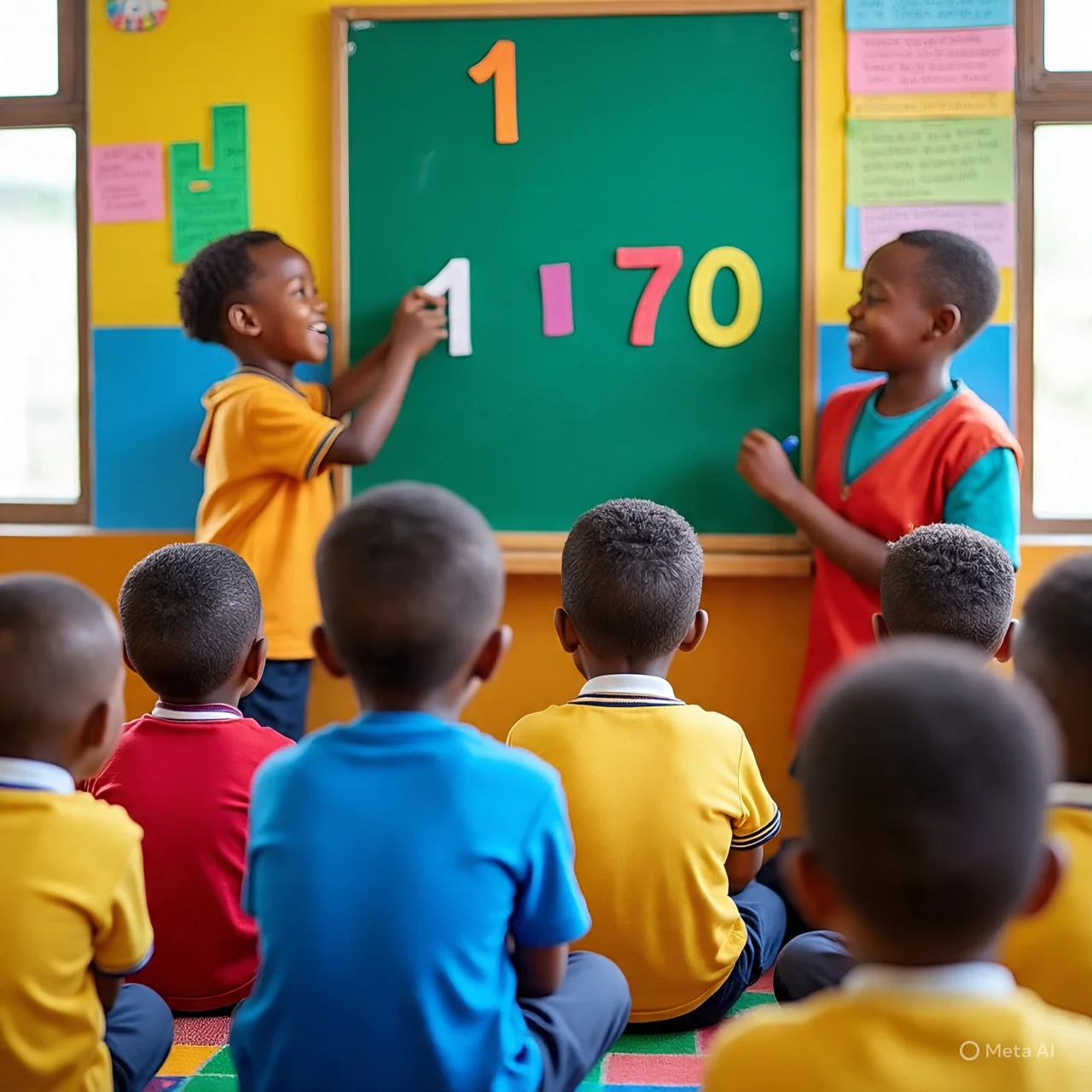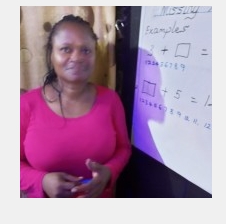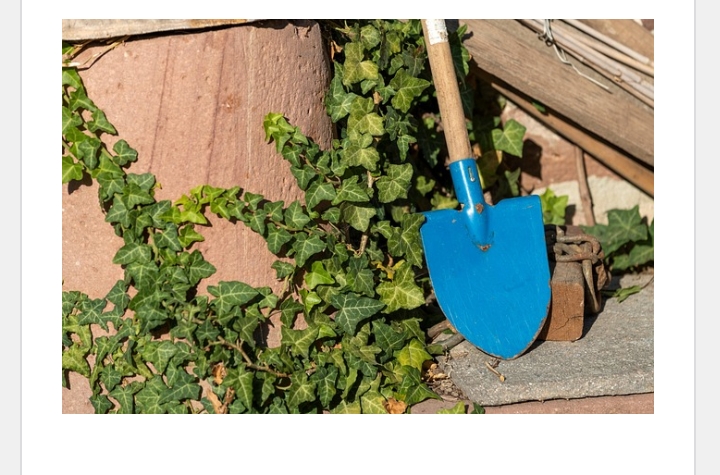Lesson Plan – Representing Data Using Pie Chart
Subject: Mathematics
Class: Primary 5
Term: First Term
Week: 2
Age: 9–10 years
Topic: Representing Data
Sub-topic: Pie Chart
Duration: 40 minutes
Behavioural Objectives
By the end of the lesson, pupils should be able to:
-
Explain what a pie chart is.
-
Identify the key features of a pie chart.
-
Draw a simple pie chart using given data.
-
Interpret data from a pie chart.
-
Relate the use of pie charts to everyday life.
Keywords
Pie chart, Data, Representation, Angle, Circle, Degrees, Sector, Fraction, Whole, Diagram.
Set Induction (Attention-Grabbing Story)
Teacher tells a short story:
Teacher: “Last Sunday, my cousin Chika had a birthday party. She bought a big round cake and invited ten of us. But she did something special — she cut the cake into slices to match our favourite flavours. Four slices had chocolate, three slices had vanilla, two slices had strawberry, and one slice had coconut. She called it her ‘cake chart’. Do you know what that reminds me of? A pie chart — a colourful, round chart that shows how things are shared. Today, we will learn how to make one.”
Entry Behaviour
Pupils have previously learned how to represent data using tables and bar charts. They are familiar with counting, addition, and simple fractions.
Learning Resources and Materials
-
Compass, protractor, ruler, pencil
-
Chart paper or cardboard
-
Coloured markers or crayons
-
Sample data tables
-
Lagos State Scheme of Work (Mathematics, Primary 5, First Term)
Building Background / Connection to Prior Knowledge
The teacher reminds pupils of the last lesson on bar charts and pictograms. Pupils recall how they used them to show the number of people who like different fruits in their class.
Embedded Core Skills
-
Numeracy skills – calculating fractions and converting to degrees.
-
Data interpretation skills – reading and analysing charts.
-
Creativity – colouring and designing the chart.
-
Collaboration – working in groups to collect and present data.
Learning Materials
Mathematics textbook, Lagos State Scheme of Work, drawing instruments, coloured pencils.
Reference Books
-
Lagos State Scheme of Work – Primary 5 Mathematics (First Term).
-
Basic Mathematics for Primary Schools – Book 5.
-
Primary Mathematics Made Easy – Book 5.
Instructional Materials
Compass, protractor, ruler, pencil, coloured markers, chart paper.
Content Development
A. Meaning of Pie Chart
A pie chart is:
-
A circular chart divided into slices.
-
Each slice represents a part of the whole.
-
The whole circle represents 100% or 360 degrees.
-
Each slice is called a sector.
-
The size of a slice shows how much of the whole it represents.
-
Bigger slices mean bigger amounts.
-
Smaller slices mean smaller amounts.
-
We use a protractor to measure angles for each slice.
-
Data must be converted to angles before drawing.
-
It is useful for showing proportions clearly.
B. Examples of Data Suitable for Pie Charts
-
Favourite fruits in a class.
-
Types of transport pupils use to school.
-
Food items eaten during school lunch.
-
Number of pupils in each house team.
-
Distribution of different animals in a farm.
-
Favourite Nigerian dishes in a family.
-
Money spent on different household items.
-
Subjects pupils like the most.
-
Types of clothes worn on Children’s Day.
-
Number of different pets owned by pupils.
Teacher’s Activities
-
Revise the last lesson on bar charts.
-
Tell the story about the birthday cake.
-
Explain the meaning of pie chart.
-
Show a sample pie chart on the board.
-
Present a data table and show how to convert to angles.
-
Demonstrate drawing the pie chart step-by-step.
-
Colour each sector differently.
-
Ask pupils to work in groups to collect simple data.
-
Guide them in converting the data to angles.
-
Supervise as they draw their pie charts.
Learners’ Activities
-
Listen to the teacher’s story.
-
Recall past lessons on bar charts.
-
Observe the teacher’s demonstration.
-
Participate in calculating angles from data.
-
Work in groups to collect data.
-
Draw a pie chart based on their data.
-
Colour and label the chart.
-
Present their charts to the class.
-
Answer the teacher’s questions.
-
Ask their own questions for clarity.
Evaluation Questions (Multiple Choice Fill-in-the-Blank)
-
A pie chart is a ______ diagram.
a) Square
b) Circle
c) Triangle
d) Rectangle -
The whole circle in a pie chart is ______ degrees.
a) 90°
b) 100°
c) 180°
d) 360° -
Each slice of a pie chart is called a ______.
a) Angle
b) Sector
c) Portion
d) Fraction -
The bigger the slice, the ______ the value it represents.
a) Smaller
b) Bigger
c) Equal
d) Same -
Pie charts show data as parts of a ______.
a) Circle
b) Line
c) Table
d) Square -
You need a ______ to measure the angles for a pie chart.
a) Compass
b) Protractor
c) Ruler
d) Eraser -
The total of all slices in a pie chart is ______.
a) 50%
b) 75%
c) 100%
d) 25% -
Pie charts are good for showing ______.
a) Length
b) Proportion
c) Distance
d) Height -
A pie chart is also called a ______ chart.
a) Circle
b) Bar
c) Square
d) Column -
Pie charts are often coloured to make them ______.
a) Boring
b) Confusing
c) Attractive
d) Dark
Class Activity Discussion (FAQs)
-
Q: Why is it called a pie chart?
A: Because it looks like a round pie cut into slices. -
Q: What does the whole circle mean?
A: It means the total amount of data. -
Q: What is a sector?
A: A slice of the pie chart. -
Q: How do we measure a sector?
A: Using a protractor in degrees. -
Q: Why do we use colours in pie charts?
A: To make it easier to read and understand. -
Q: Can we use pie charts for very large data?
A: No, they are better for small sets of data. -
Q: What is the total angle of a circle?
A: 360 degrees. -
Q: Can pie charts show percentages?
A: Yes, they can. -
Q: What tool helps us draw a perfect circle?
A: A compass. -
Q: Can a pie chart have only two slices?
A: Yes, if there are only two categories.
Assessment (Short-Answer Questions)
-
Define a pie chart.
-
What is the total degree of a circle?
-
What is another name for a slice of a pie chart?
-
Name two tools needed to draw a pie chart.
-
How do we change data into angles?
-
Give one example of data that can be shown in a pie chart.
-
What does a big slice in a pie chart mean?
-
What does a small slice in a pie chart mean?
-
Can pie charts be used for percentages?
-
Why should pie charts be colourful?
Conclusion
The teacher moves around the class, marking pupils’ work and giving feedback. Pupils correct their mistakes and display their charts for others to see.
SEO Elements
-
Captivating Title: Representing Data Using Pie Chart – Primary 5 Maths
-
Focus Keyphrase: Representing Data Pie Chart
-
Focus Keyword: PieChart
-
SEO Title: Representing Data Using Pie Chart – Primary 5 Mathematics Lesson Note
-
Slug: representing-data-pie-chart-primary-5
-
Excerpt: Learn how to represent data using pie charts in Primary 5 Mathematics. Includes examples, activities, and Nigerian curriculum alignment.
-
Meta Description: Learn how to draw and interpret pie charts in Primary 5 Mathematics with examples and activities.
Internal Links
External Links
If you want, I can now create the actual pie chart diagrams for this lesson in bright colours so that it’s ready for classroom use and can also be uploaded to your WordPress post.














